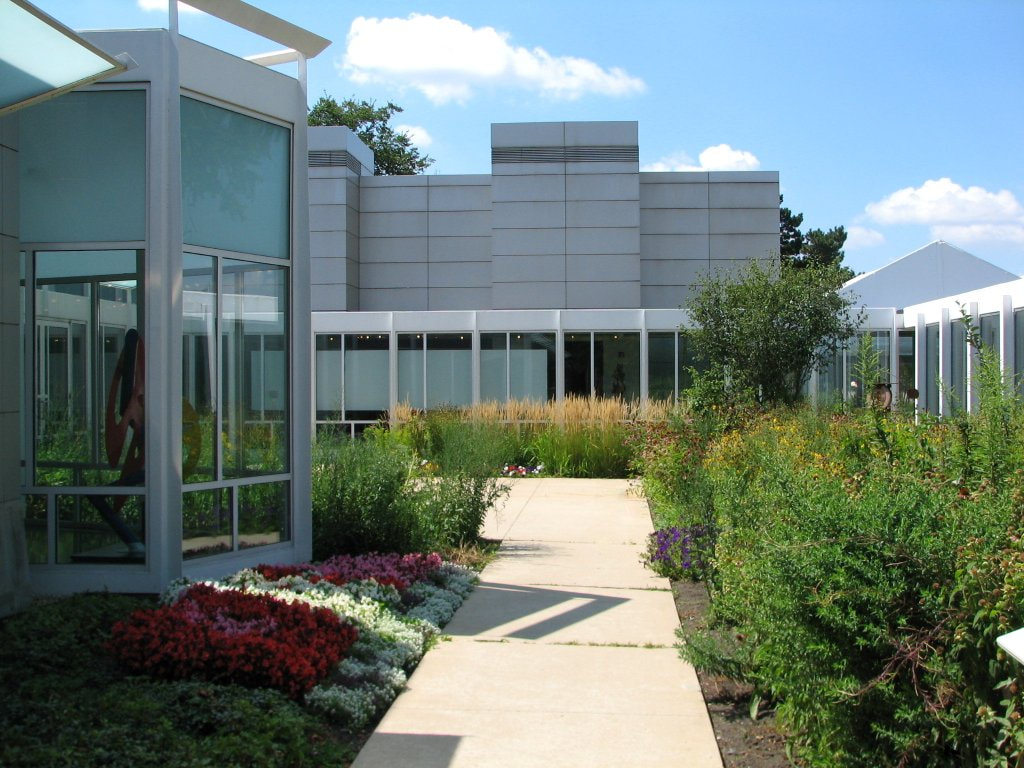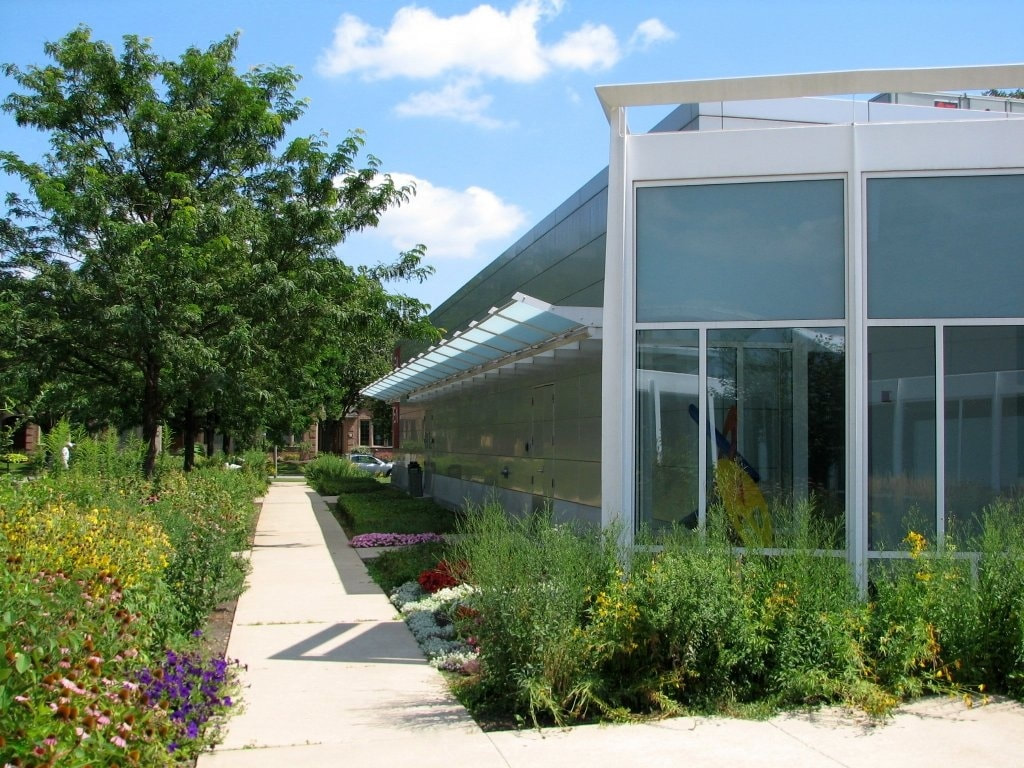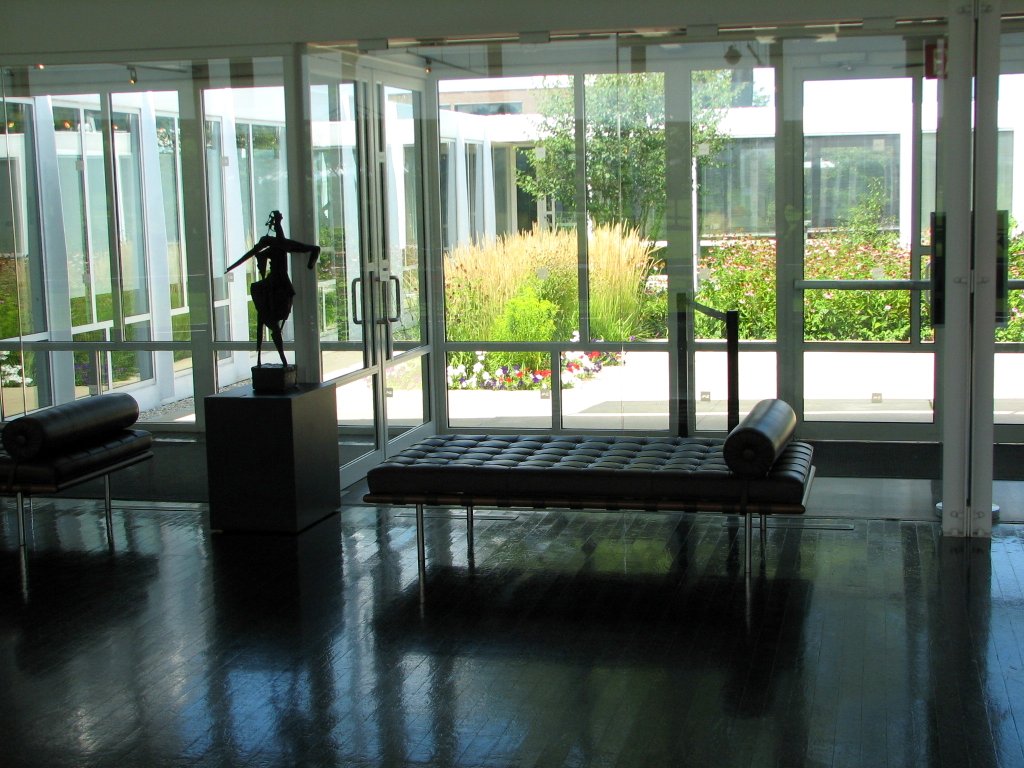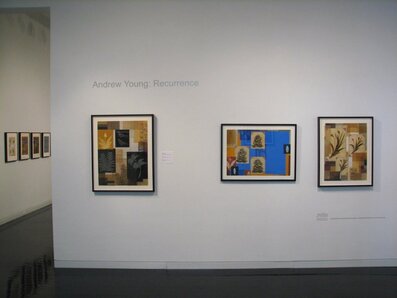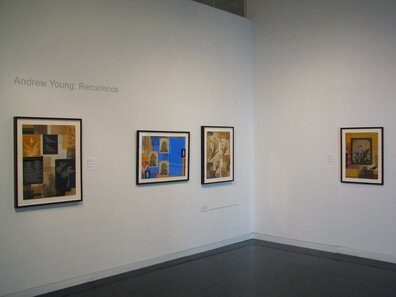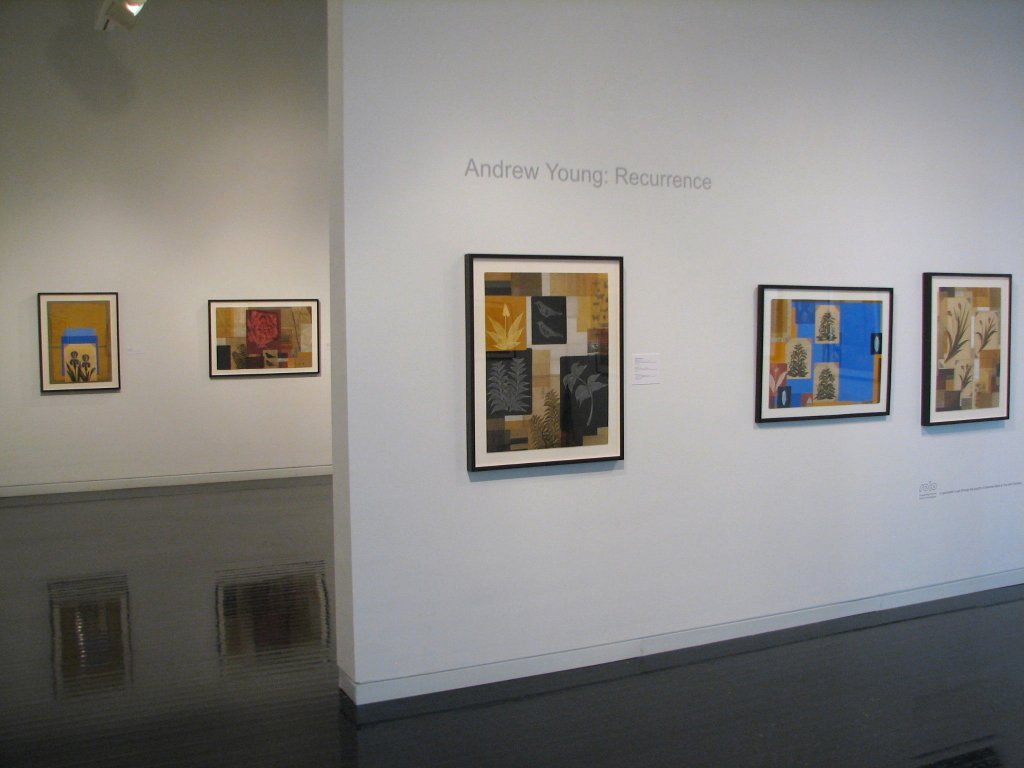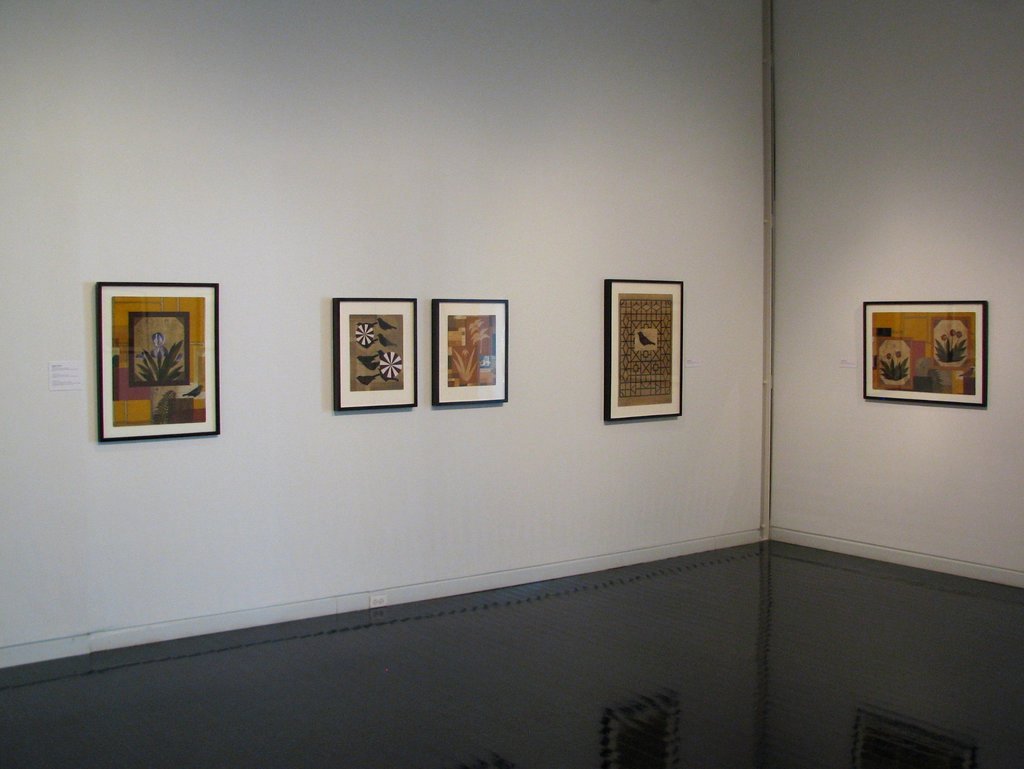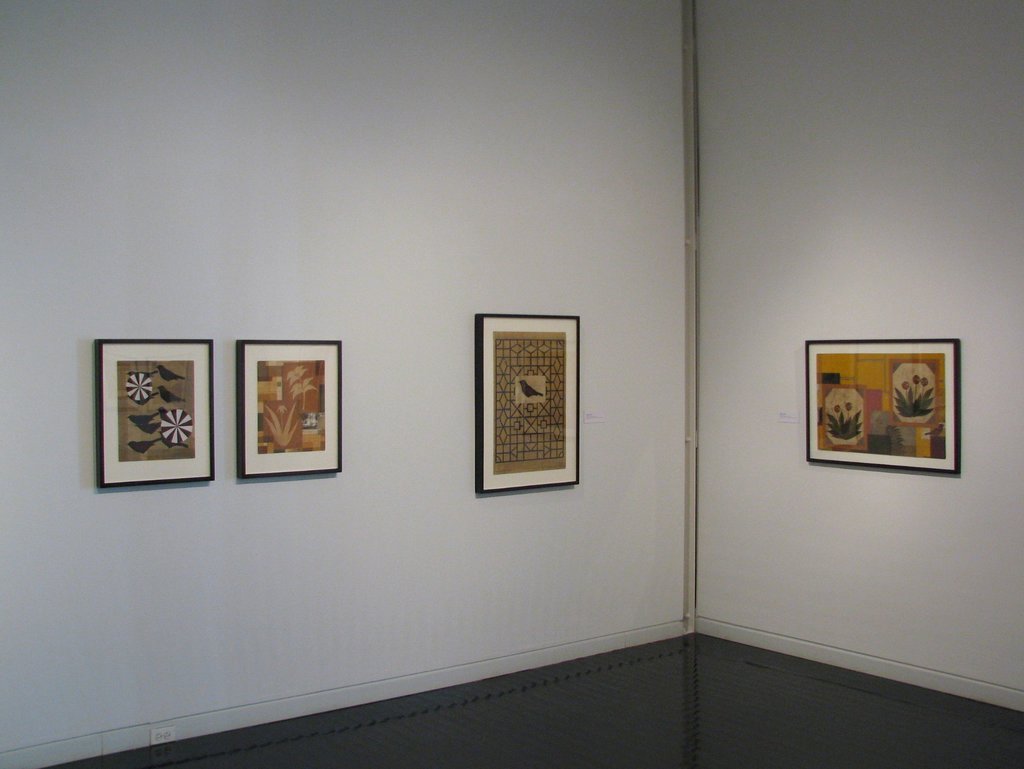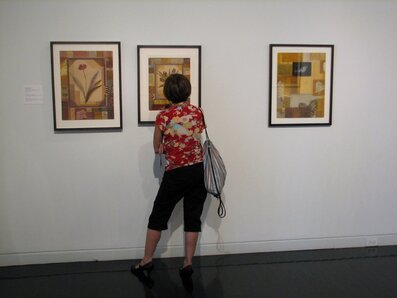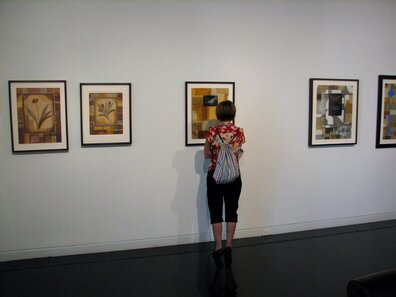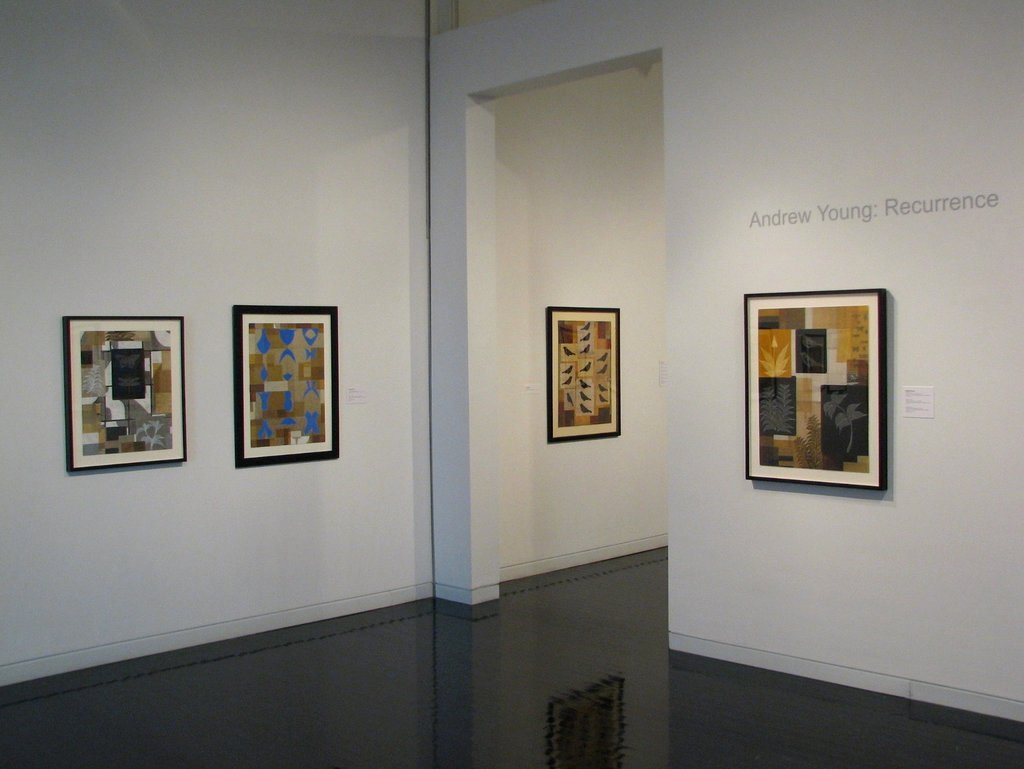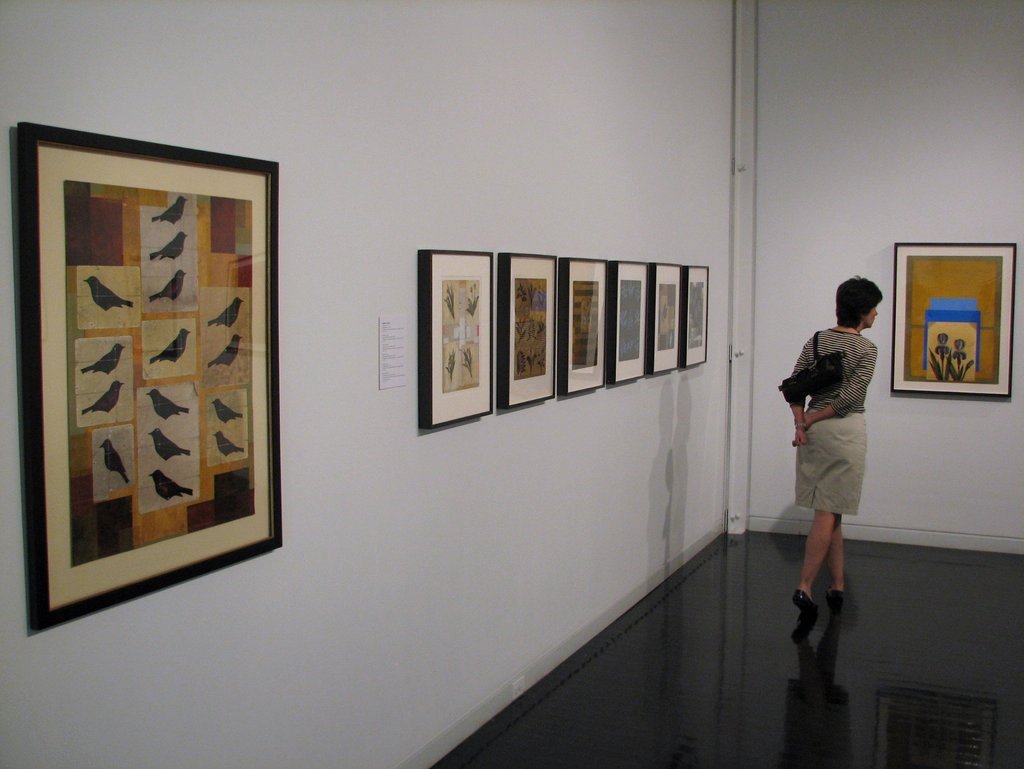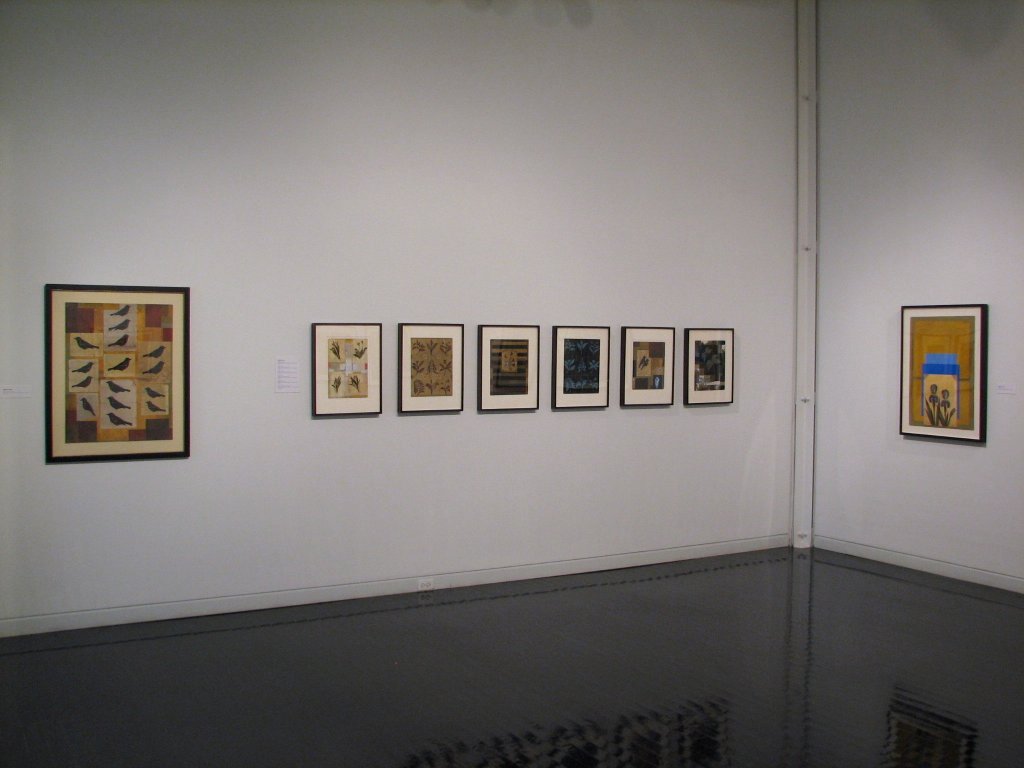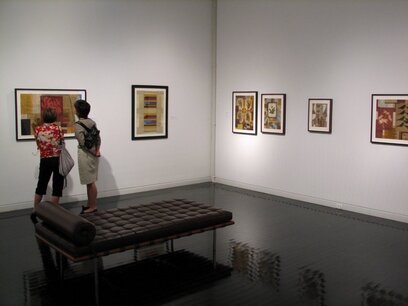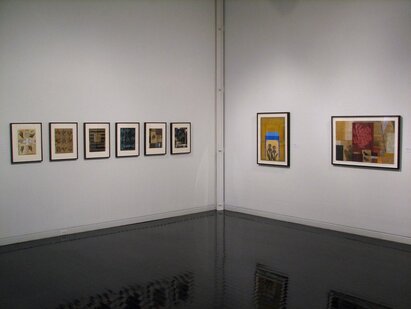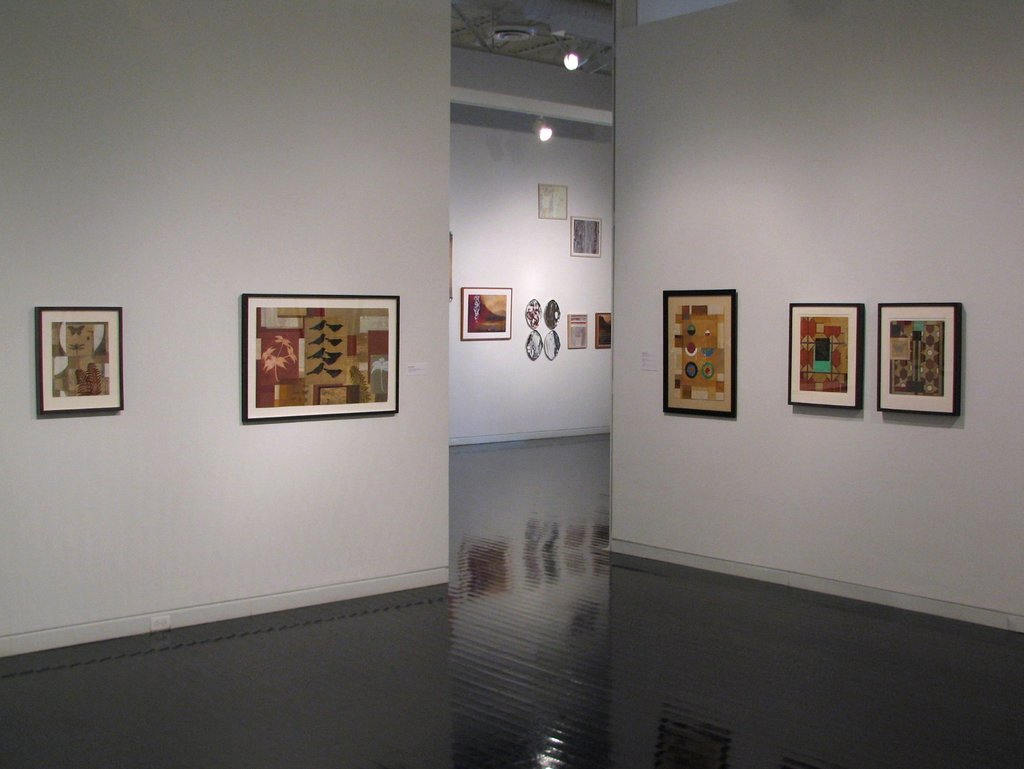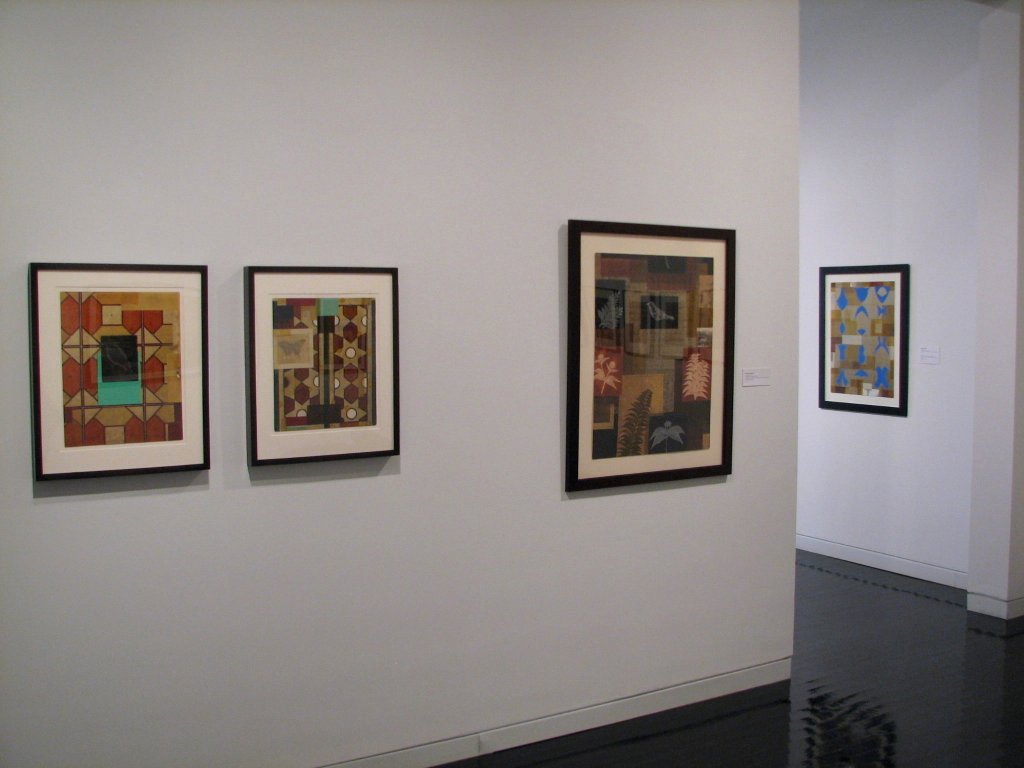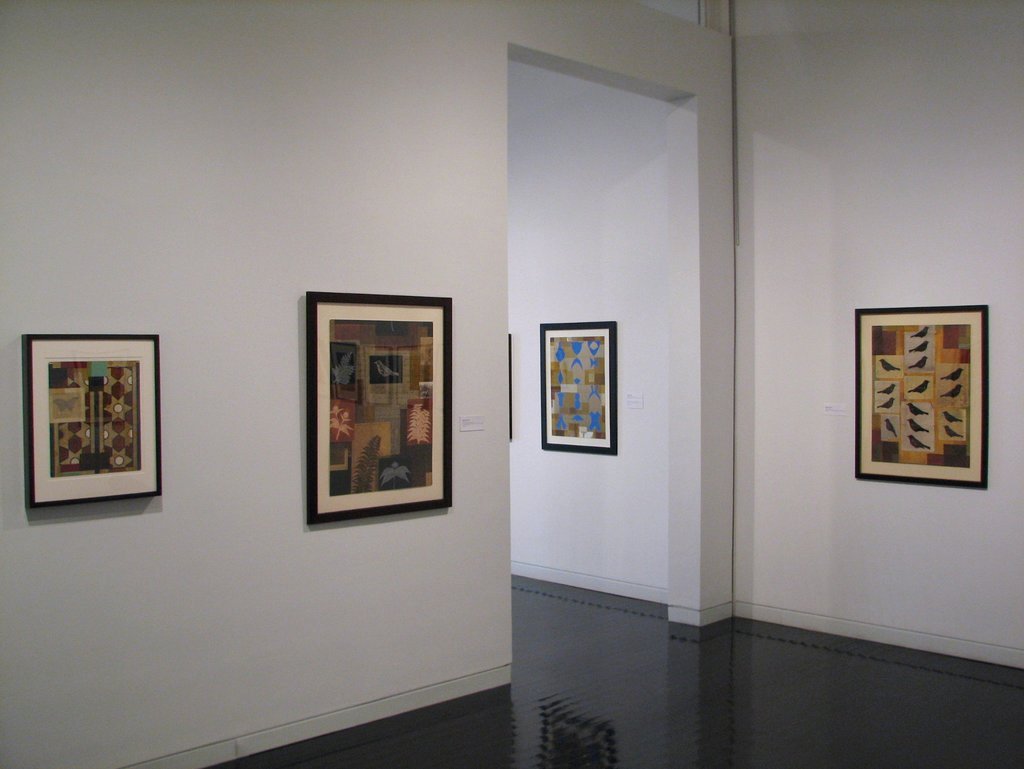Selected Exhibition Views
Recurrence
curated by Melissa Dahlquist
Elmhurst Art Museum, Elmhurst, Illinois - 2008
Artist Statement for Recurrence Exhibition
All my life I’ve been fascinated with the natural world. Through collecting, sorting, identifying, and drawing what I discover in my surroundings, I feel more closely connected. It seemed reasonable that I would extend this interest to a college major in biology, until a semester abroad precipitated a shift in my studies from science to an emphasis in the humanities. One was not traded for the other, exactly, but the form by which I considered the environment around me evolved. I began to look at art, language, and philosophy as encompassing the themes that had for so long captured my imagination, only with human expression attached: the spirit and manner by which we reveal ourselves.
To think of art as “transporting” is to establish it as a vehicle to a place beyond the artifact itself. Whereas science looks at something as concrete, almost detached from the experiential, I believe the impulse to classify, alone, says a lot about the human longing for understanding and connection. Art can investigate, perhaps satisfy, this aspiration. My artworks are searching constructions this way, humbly grounded in their material nature and subject matter, but also craving the ethereal, maybe universally connecting. They reach through time, from past to present, and to other lands, like a playful, occasionally melancholic, quest for a lost sensibility.
Perhaps to restore a certain physical intimacy in the studio process, I have moved from large paintings made of
oil and tempera to more delicate collages of hand-painted papers. Constructed of cotton and rice pages, mineral pigments and the occasional found stamp or photograph, each piece is a poised counterbalance. It presents an “aged” surface within contemporary formalism, a golden Italianate palette infused with an Asian sense of space, and a combination of antecedents, both European and American, that have influenced the development of abstraction within recognizable still life. Gouges, incisions, folds, and scraping beneath the smooth veneer often countermand preciousness of the surface, and to look at the elements of these collages singularly is to find each is hand crafted, like a miniature complete work. I group these elements similarly to a collection of stones, shell species or plants that feed eventually – depending on the impetus – into a cluster which becomes the final piece. Nature still plays a major role in the interpretation of the work, but it is neither static nor limited. Instead, it is
our reading of and relationship to nature that becomes the subject.
Historically, collage has incorporated materials found in the world outside of art, offering a new identity to the pieces, both by context and contrast. The object-nature of my process - sometimes including pigments mined directly from the earth or more often elements made to look like they’ve had a previous life - becomes a bridge to the physical and familiar. The artwork as a whole takes on a sort of magical autonomy existing between the known world and the illusory. By being playful, personally poetic, or even mysterious, I attempt to lend a human dimension to modernism’s abstract language; figuration remains a trace, a single gesture – bird, plant or insect – and a lyrical moment above the architectural composition that is defined. My work as a whole is this lyricism, the sounds and fragile feelings of our experience within life’s structure.
All my life I’ve been fascinated with the natural world. Through collecting, sorting, identifying, and drawing what I discover in my surroundings, I feel more closely connected. It seemed reasonable that I would extend this interest to a college major in biology, until a semester abroad precipitated a shift in my studies from science to an emphasis in the humanities. One was not traded for the other, exactly, but the form by which I considered the environment around me evolved. I began to look at art, language, and philosophy as encompassing the themes that had for so long captured my imagination, only with human expression attached: the spirit and manner by which we reveal ourselves.
To think of art as “transporting” is to establish it as a vehicle to a place beyond the artifact itself. Whereas science looks at something as concrete, almost detached from the experiential, I believe the impulse to classify, alone, says a lot about the human longing for understanding and connection. Art can investigate, perhaps satisfy, this aspiration. My artworks are searching constructions this way, humbly grounded in their material nature and subject matter, but also craving the ethereal, maybe universally connecting. They reach through time, from past to present, and to other lands, like a playful, occasionally melancholic, quest for a lost sensibility.
Perhaps to restore a certain physical intimacy in the studio process, I have moved from large paintings made of
oil and tempera to more delicate collages of hand-painted papers. Constructed of cotton and rice pages, mineral pigments and the occasional found stamp or photograph, each piece is a poised counterbalance. It presents an “aged” surface within contemporary formalism, a golden Italianate palette infused with an Asian sense of space, and a combination of antecedents, both European and American, that have influenced the development of abstraction within recognizable still life. Gouges, incisions, folds, and scraping beneath the smooth veneer often countermand preciousness of the surface, and to look at the elements of these collages singularly is to find each is hand crafted, like a miniature complete work. I group these elements similarly to a collection of stones, shell species or plants that feed eventually – depending on the impetus – into a cluster which becomes the final piece. Nature still plays a major role in the interpretation of the work, but it is neither static nor limited. Instead, it is
our reading of and relationship to nature that becomes the subject.
Historically, collage has incorporated materials found in the world outside of art, offering a new identity to the pieces, both by context and contrast. The object-nature of my process - sometimes including pigments mined directly from the earth or more often elements made to look like they’ve had a previous life - becomes a bridge to the physical and familiar. The artwork as a whole takes on a sort of magical autonomy existing between the known world and the illusory. By being playful, personally poetic, or even mysterious, I attempt to lend a human dimension to modernism’s abstract language; figuration remains a trace, a single gesture – bird, plant or insect – and a lyrical moment above the architectural composition that is defined. My work as a whole is this lyricism, the sounds and fragile feelings of our experience within life’s structure.
